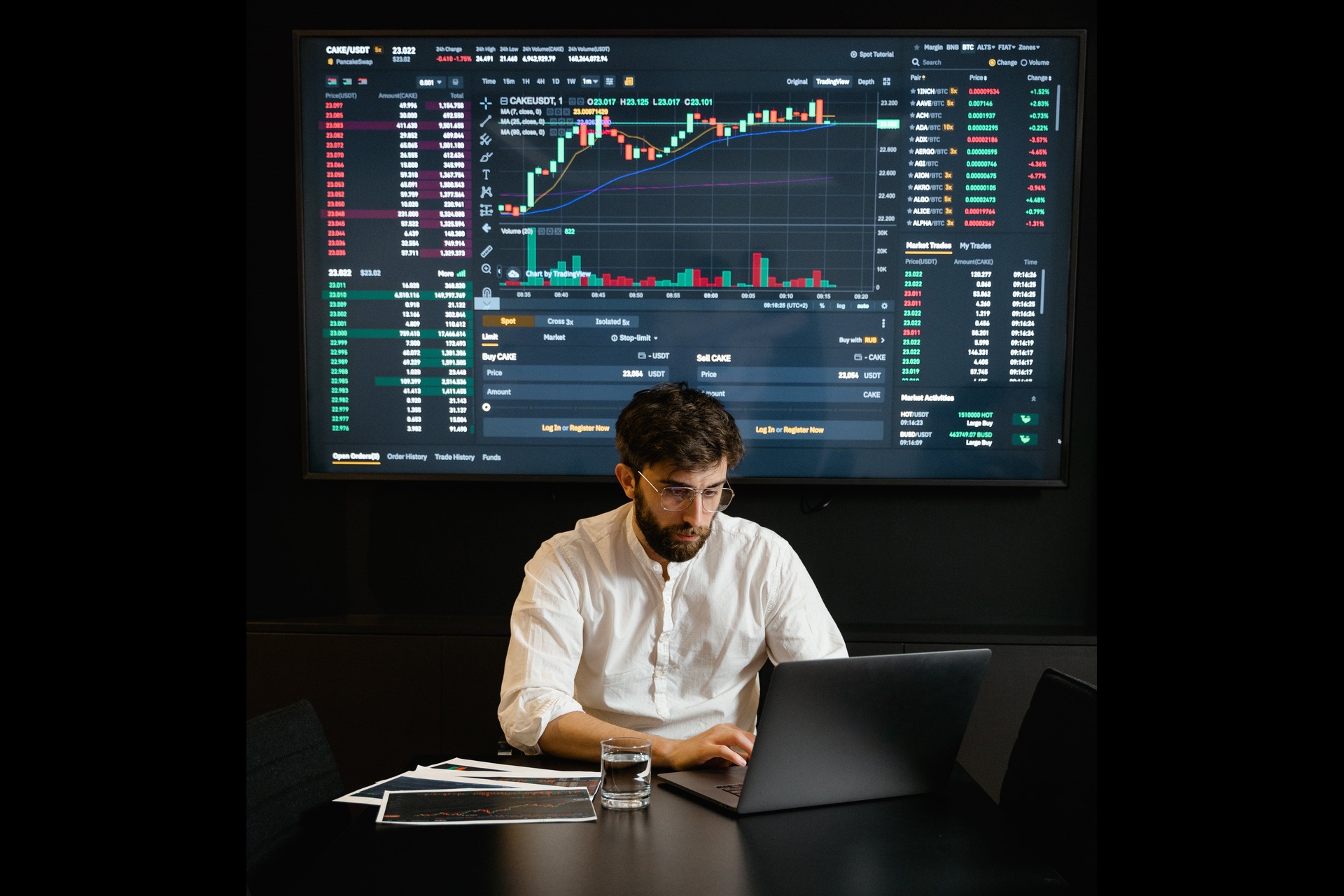The rapid expansion of the Philippine economy in the third quarter has sparked intense debate among investors and prompted a more thorough analysis of its effects on investment ventures. Being one of the economies in the region with the quickest rate of growth, the effect of this rapid expansion on investment projects becomes a key consideration when making strategic decisions. It becomes imperative to investigate the implications of this explosive growth on different investment trajectories, as it may need a revision in risk assessments, asset allocations, and portfolio management methodology overall. The purpose of this introduction is to provide investors with an understanding of the potential and difficulties presented by the Philippines’ strong Q3 economic development as they navigate the country’s ever-changing financial landscapes. As a result, real estate investment shows a pretty good portfolio to invest in. With the current GDP for 2023, it is safe to assume that it is the perfect opportunity to invest in Condos for Sale with Crown Asia.
The Philippine economy grew faster than expected in Q3, with Gross National Product growing 5.9% in July-September, surpassing analysts’ expectations of 4.3-4.9%. This growth was largely due to government spending, which grew by 6.7%, primarily on infrastructure. Inflation, which hit household consumption hard, soared above the government’s target of 2%. The government’s efforts to compensate for underspending contributed to 36% of GDP growth in Q3.
An abundance of investment opportunities has arisen in a number of areas, including real estate, retail, technology, infrastructure, and renewable energy, as a result of the Philippines’ explosive economic expansion in Q3. Investors can benefit from the expanding population and the need for homes in suburban and urban locations. Investors are also drawn to the IT sector, building infrastructure, and investments in renewable energy. Risk assessment, market volatility, and keeping an eye on inflation and monetary policy are obstacles, though. To maintain stability in the face of economic ups and downs, investors need to exercise caution and adjust to these tendencies.
The Philippines is the fast growing economy in Asia
Inquirer.net states (2023). The third quarter saw faster-than-expected growth in the Philippine economy, largely due to government spending while inflation drove consumer consumption to its worst increase in two years.
The total value of goods produced and services provided in an economy is known as the gross domestic product (GDP), and it increased by 5.9 percent from July to September of last year. This was a stronger annual growth than the 4.3 percent that occurred in the three months prior, according to a report released on November 9, 2023, by the Philippine Statistics Authority (PSA).
The most recent figure exceeded analysts’ projections, which had placed growth for the previous quarter between 4.3 and 4.9 percent. The GDP expanded 3.3% on a quarter-over-quarter basis, an improvement from the 0.7 percent decline in the April–June quarter.
Furthermore, Bloomberg noted that despite softer consumer spending and a drop in investment, the Philippine economy is still expected to expand at the fastest rate in Southeast Asia this year, despite some concerns.
This is the first acceleration since the 7.7% pace recorded in the same quarter last year. Additionally, it outpaces the 4.3% growth in the second quarter and the Bloomberg survey’s consensus projection of 4.7%.
According to the International Monetary Fund’s prediction, the Philippines’ economy will grow at the quickest rate in Southeast Asia this year and the following, based on its performance. It has been widely anticipated that a better inflation forecast will support company growth and boost consumer spending. The government’s emphasis on infrastructure projects will support job growth and increased economic activity.
According to PSA data, household consumption increased by 5% year over year in the third quarter, which was less than the 5.5 percent growth observed in the April–June period.
The last time consumer spending dropped below 5%, according to national statistician Claire Dennis Mapa, was during the peak of pandemic lockdowns in the first quarter of 2021 when it dipped 4.8 percent year over year.
Arsenio Balisacan, the Socioeconomic Planning Secretary, stated that rising prices continue to be the biggest threat to a nation where household consumption has historically accounted for 80 percent of its economic output, even though inflation decreased to 4.9 percent in October from a four-month high of 6.1 percent in September.
Balisacan did, however, express confidence that the Marcos administration could still meet its growth targets.
The economy would need to grow by 7.2 percent in the fourth quarter to meet the government’s 6 to 7 percent growth objective for this year, given that GDP growth averaged 5.5 percent in the first three quarters.
At a press conference, Balisacan stated that Inflation will be the key to the revival of the most growth in consumption,” adding that the government’s current challenge was to maintain the slowdown in price growth.
The Fiscal Drag
The fourth quarter should see slower growth momentum return, according to Nomura analyst Euben Paracuelles, despite the customary spike in demand during the holiday season.
According to Paracuelles and the team’s analysis in an email, the aggressive rate hikes by the Bangko Sentral ng Pilipinas to control inflation are already causing businesses and consumers to reconsider big-ticket purchases and investments. They believe that the growth of private consumption will continue to slow down due to the deteriorating household sentiment that is evident in today’s data.
He said they think the high-interest rate environment expected to last would continue to put more and more restrictions on private investment spending, which has been more drab when it comes to durable equipment.
Senior Asia economist Gareth Leather of Capital Economics concurred with Paracuelles.
Leather and his colleagues stated that they anticipate below-trend and below-consensus growth in the upcoming quarters due to the drag from higher interest rates that have not yet permeated the economy as a whole and the likelihood of a decline in global demand.
Long-term Presidential Reforms for Marcos
Rep. Joey Salceda of Albay reacted to the stronger-than-expected economic performance by saying President Marcos was now “in a position of strength” to implement long-term reforms due to the GDP increase in the third quarter.
Salceda stated that Marcos would be able to maintain economic growth with “more tools to work with.”
“President Marcos has the space and the opportunity to work on policies and priorities that are forward-looking now that inflation is under control and growth is back on track,” the congressman noted.
He pointed out that the construction sector experienced strong growth in the third quarter due primarily to government investment.
Examining the impact of rapid Q3 economic growth on real estate investors’ investment plans in the Philippines.
Known for its durability and strong economic potential, the Philippines’ economy has grown at an excellent rate in the third quarter. This acceleration has caused a noticeable rippling effect throughout the financial landscape and is frequently a catalyst for reinventing investment methods. Investors are paying close attention to these trends, and making educated judgments and taking advantage of opportunities requires a grasp of the subtle effects of this rapid economic expansion on investment efforts.
Revealing Possibilities Amid Development
The Philippines’ rapid Q3 economic expansion offers a wide range of investment prospects in several industries. The growing economy of the nation is frequently viewed as an attractive prospect for both foreign and domestic investment. Due to rising consumer spending and government-backed programs, industries like technology, infrastructure, renewable energy, and consumer goods are gaining attention and are expected to experience significant growth. Industries that demonstrate resilience and adaptability become potential investment hotspots when the economy grows.
Residential Real Estate Properties
The demand for residential homes is fueled by a rising economy, which is frequently correlated with increasing consumer confidence and purchasing power. There is a growing need for housing in urban centers and developing suburban areas, which presents prospects for real estate investors. Condos, mixed-use projects, and affordable housing all serve to meet the needs of a developing middle class and a growing population.
Crown Asia is skilled at creating immaculate homes that appeal to a wide variety of discerning homeowners. The demand for residential real estate is probably going to rise as a result of the economy’s faster-than-expected expansion in Q3. By strategically aligning offers to meet the changing desires of potential homeowners wanting high-quality living spaces in vibrant metropolitan locations, the organization can capitalize on this increase.
Retail and Commercial Spaces

Growth in the economy encourages entrepreneurship and business expansion, which increases demand for retail and commercial space. For investors seeking steady profits, prime properties in central business districts (CBDs) become sought-after assets. Co-working spaces, office towers, and retail malls are expected to prosper in the face of growing economic activity and commercial prospects.
Innovation and Technology
The tech industry is the focus of investor attention because of its fast evolution and innovation. The Philippines’ ever-expanding digital landscape makes investments in tech-driven businesses and startups highly lucrative. Software development, fintech, and e-commerce businesses offer attractive investment opportunities because they can capitalize on the expanding need for digital solutions in a range of industries.
Infrastructure Construction and Improvement
The Philippine government’s dedication to developing the country’s infrastructure through large-scale initiatives. For investors interested in long-term projects in real estate, transportation, and construction, there are plenty of opportunities. Not only can infrastructure improvements promote economic expansion, but they also act as reliable investment vehicles with high potential for profit.
Crown Asia has the opportunity to strategically place its properties in response to government infrastructure projects, which serve as a stimulus for economic growth. Properties that are located close to important infrastructure developments—like growth corridors or transportation hubs—are more desirable because of their potential appreciation and easier accessibility. By making the most of these sites, Crown Asia may draw in discerning customers looking for contemporary conveniences and services and expand its investment portfolio.

Ventures in Renewable Energy
Amidst the worldwide trend towards sustainability, the Philippines’ abundant renewable energy reserves offer a compelling avenue for investment. Not only can initiatives supporting hydroelectric, wind, and solar power plants benefit the environment, but they also present profitable business opportunities. Putting money into renewable energy can be a wise investment for those who understand the importance of sustainable energy sources and the nation’s commitment to them.
Obstacles Along the Growth Path
Accelerated economic growth presents opportunities for investments, but it also presents risks that should be carefully considered.
Hazard Assessment
Changes in regulations and heightened market volatility are frequently linked to rapid economic growth. Astute risk management techniques are necessary to navigate these changes. Investors must conduct thorough due diligence, assess market risks, and diversify portfolios to mitigate potential downsides.
Monetary Policies and Inflation
Occasionally, an acceleration of economic growth can lead to inflationary pressures, which might affect investing strategy. It becomes essential to keep an eye on central banks’ actions and how they react to inflation. Portfolio adjustments made to protect against inflationary effects guarantee stability in the face of economic ups and downs.
Conclusion: strategic methods for investing in real estate
A deliberate approach is necessary to fully exploit the potential of real estate investment opportunities presented by the Philippines’ increased Q3 economic development. Key success factors include diversification, in-depth market analysis, and a lengthy investment horizon.
By using a diversified portfolio strategy that distributes risk and profit over several real estate markets, investors can reduce the risks brought on by swings in the market. Adaptation to changing economic situations is also made possible by carrying out due diligence, comprehending local market dynamics, and preserving flexibility in investment strategies.
In summary, faster economic growth is good news for the Philippine real estate market, but savvy investors take advantage of these developments by implementing calculated plans that account for possible obstacles and welcome the industry’s dynamic nature. In the Philippines’ dynamic real estate market, investors can profitably ride the tide of economic expansion by adopting prudence and strategic thinking.


